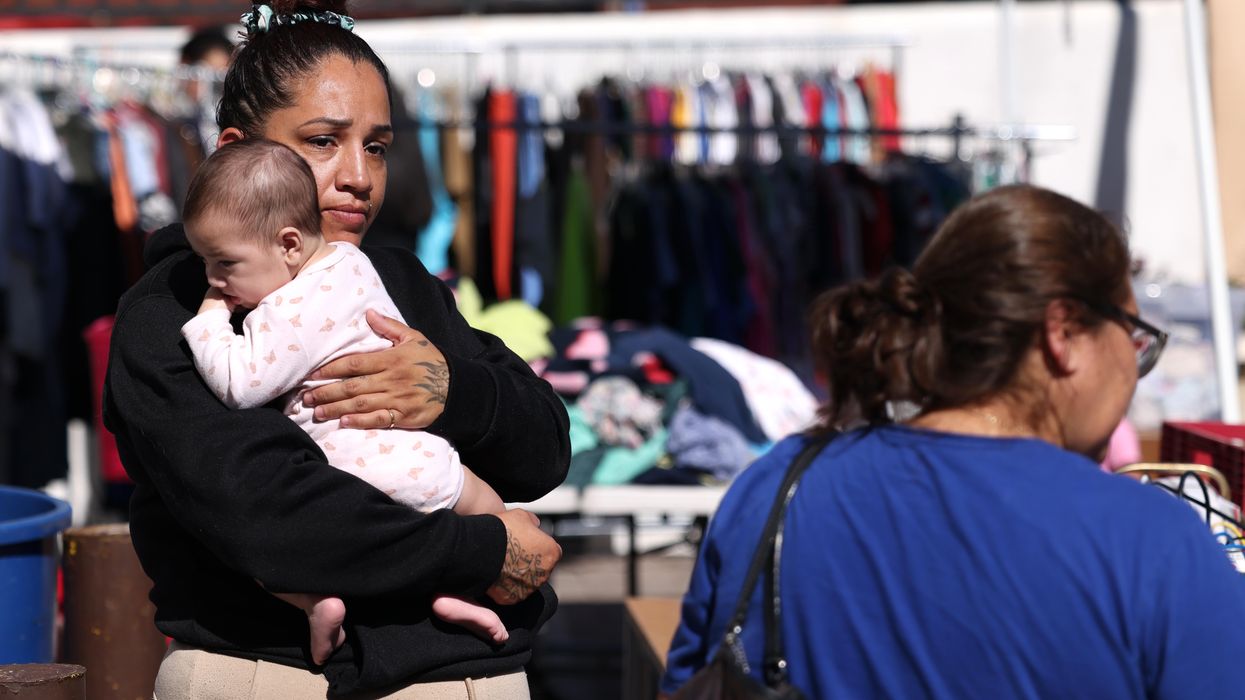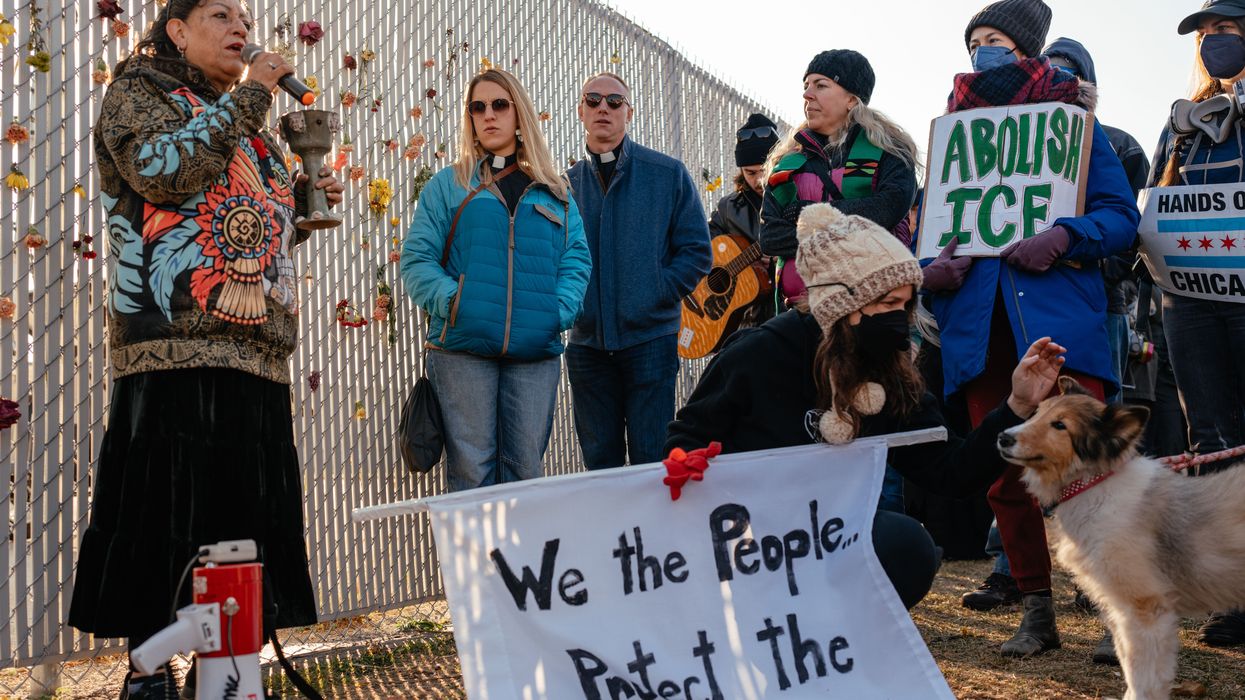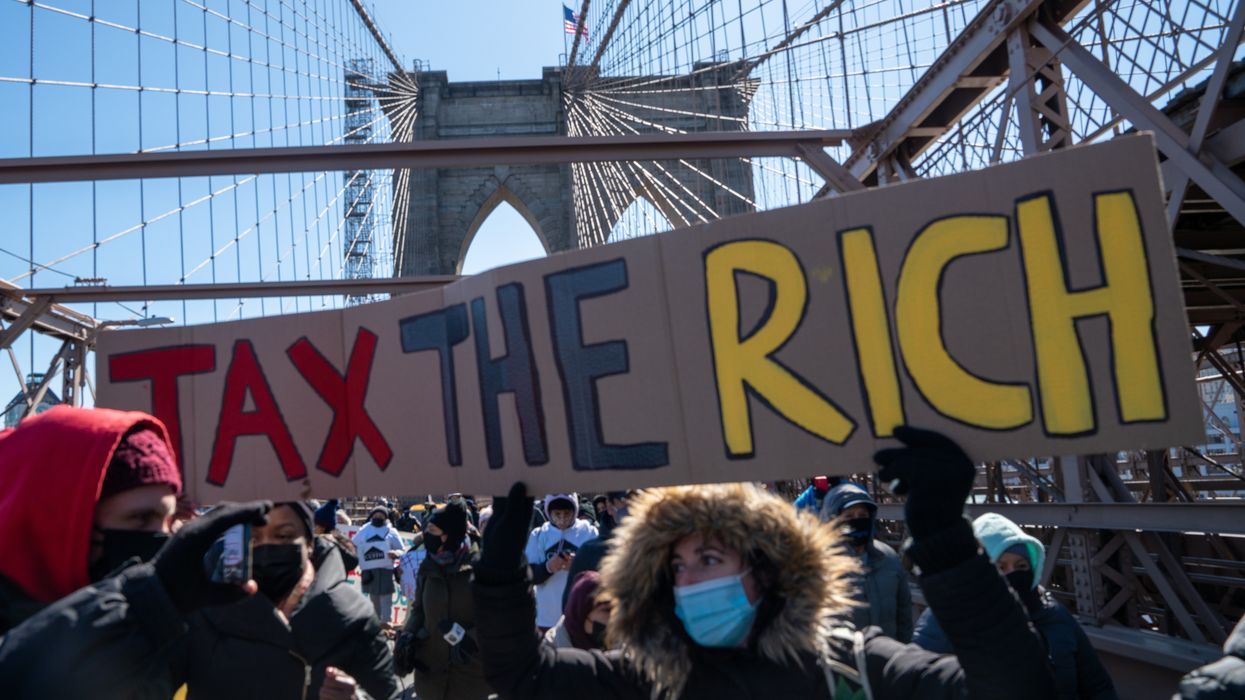March, 24 2021, 12:00am EDT

For Immediate Release
Contact:
David Rosen, drosen@citizen.org, (202) 588-7742
Derrick Robinson, drobinson@citizen.org, (202) 588-7741
Big Tech Lobbying and Campaign Spending Soars
Facebook, Amazon are now corporate America's two biggest lobbying spenders.
WASHINGTON
Facebook and Amazon are now the two biggest corporate lobbying spenders in the country, according to a report released today by Public Citizen. The report, based on data from the Center for Responsive Politics, finds that Big Tech has eclipsed Big Oil and Big Tobacco, two historically big federal lobbying spenders, with Amazon and Facebook having spent nearly twice as much as Exxon and Philip Morris on lobbying in 2020.
"We need to rein in Big Tech's influence in Washington now, so that lawmakers and regulators can break them up, enact comprehensive privacy legislation, and hold these companies accountable for harming our economy and our democracy," said Jane Chung, Big Tech accountability advocate for Public Citizen and author of the report. "The Federal Trade Commission, the Justice Department, and state attorneys general are signaling that justice is finally on its way. But with Big Tech political expenditures at historic levels, it's more important than ever for lawmakers to show their independence and bring these companies to heel."
"The Big Four have learned to use their concentrated wealth to entrench their economic power through political engagement," said Lisa Gilbert, executive vice president for Public Citizen. "In this moment of enhanced scrutiny, tech companies are going to spend millions and dial through their Rolodexes looking for officials to stop regulation and legislation needed to protect consumers. That is simply unacceptable."
Other key findings in the report:
- During the 2020 cycle, Big Tech companies spent $124 million in lobbying and campaign contributions, breaking its own records from past election cycles. Amazon's spending increased by 30%, and Facebook's spending jumped an astounding 56%.
- Facebook, Amazon, Google, and Apple together added 40 new lobbyists in the 2020 cycle, up from 293 in 2018 to a total of 333 lobbyists in 2020.
- Big Tech PACs, lobbyists, and employees contributed at least 33% more in the 2020 cycle than they did in 2018 - an increase of over $4 million, and a total of nearly $16.5 million in contributions. This is the largest cycle-to-cycle increase in contributions from Big Tech since Public Citizen began monitoring the industry in 2010.
- Among members of Congress with jurisdiction over privacy and antitrust issues, 94% received money from a Big Tech corporate PAC or lobbyist. In 2020 alone, Big Tech PACs and lobbyists contributed more than $3 million to the lawmakers tasked with overseeing and regulating them.
Public Citizen is a nonprofit consumer advocacy organization that champions the public interest in the halls of power. We defend democracy, resist corporate power and work to ensure that government works for the people - not for big corporations. Founded in 1971, we now have 500,000 members and supporters throughout the country.
(202) 588-1000LATEST NEWS
‘It Does Not Have to Be This Way’: Child Hunger Set to Surge as Trump Withholds SNAP Funds
Two federal courts ruled Friday that the White House must release contingency food assistance funds, but officials have suggested they will not comply with the orders.
Oct 31, 2025
Though two federal judges ruled on Friday that the Trump administration must use contingency funds to continue providing food assistance that 42 million Americans rely on, White House officials have signaled they won't comply with the court orders even as advocates warn the lapse in nutrition aid funding will cause an unprecedented child hunger crisis that families are unprepared to withstand.
The US Department of Agriculture (USDA) is planning to freeze payments to the Supplemental Nutrition Assistance Program on Saturday as the government shutdown reaches the one-month mark, claiming it can no longer fund SNAP and cannot tap $5 billion in contingency funds that would allow recipients to collect at least partial benefits in November.
President Donald Trump said Thursday that his administration is "going to get it done," regarding the funding of SNAP, but offered no details on his plans to keep the nation's largest anti-hunger program funded, and his agriculture secretary, Brooke Rollins, would not commit on Friday to release the funds if ordered to do so.
"We're looking at all the options," Rollins told CNN before federal judges in Massachusetts and Rhode Island ordered the administration to fund the program.
The White House and Republicans in Congress have claimed the only way to fund SNAP is for Democratic lawmakers to vote for a continuing resolution proposed by the GOP to keep government funding at current levels; Democrats have refused to sign on to the resolution because it would allow healthcare subsidies under the Affordable Care Act to expire.
The administration previously said it would use the SNAP contingency funds before reversing course last week. A document detailing the contingency plan disappeared from the USDA's website this week. The White House's claims prompted two lawsuits filed by Democrat-led states and cities as well as nonprofit groups that demanded the funding be released.
On Thursday evening, US Rep. Pramila Jayapal (D-Wash.) addressed her followers on the social media platform X about the impending hunger emergency, emphasizing that the loss of SNAP benefits for 42 million Americans—39% of whom are children—is compounding a child poverty crisis that has grown since 2021 due to Republicans' refusal to extend pandemic-era programs like the enhanced child tax credit.
"One in eight kids in America lives in poverty in 2024," said Jayapal. "Sixty-one percent of these kids—that's about 6 million kids— have at least one parent who is employed. So it's not that people are not working, they're working, but they're not earning enough."
"I just want to be really clear that it is a policy choice to have people who are hungry, to have people who are poor," she said.
Diane Whitmore Schanzenbach, an economist at Georgetown University, told The Washington Post that the loss of benefits for millions of children, elderly, and disabled people all at once is "unprecedented."
“We’ve never seen the elderly and children removed from the program in this sort of way,” Schanzenbach told the Post. “It really is hard to predict something of this magnitude."
A Thursday report by the economic justice group Americans for Tax Fairness (ATF) emphasized that the impending child hunger crisis comes four months after Republicans passed the One Big Beautiful Bill Act, which slashed food assistance by shifting some of the cost of SNAP to the states from the federal government, expanding work requirements, and ending adjustments to benefits to keep pace with food inflation.
Meanwhile, the law is projected to increase the incomes of the wealthiest 20% of US households by 3.7% while reducing the incomes of the poorest 20% of Americans by an average of 3.8%.
Now, said ATF, "they're gonna let hard-working Americans go hungry so billionaires can get richer."
At Time on Thursday, Stephanie Land, author of Class: A Memoir of Motherhood, Hunger, and Higher Education, wrote that "the cruelty is the point" of the Trump administration's refusal to ensure the 61-year-old program, established by Democratic former President Lyndon B. Johnson, doesn't lapse for the first time in its history.
"Once, when we lost most of our food stamp benefit, I mentally catalogued every can and box of food in the cupboards, and how long the milk we had would last," wrote Land. "They’d kicked me, the mother of a recently-turned 6-year-old, off of food stamps because I didn’t meet the work requirement of 20 hours a week. I hadn’t known that my daughter’s age had qualified me to not have to meet that requirement, and without warning, the funds I carefully budgeted for food were gone."
"It didn’t matter that I was a full-time student and worked 10-15 hours a week," she continued. "This letter from my local government office said it wasn’t sufficient to meet their stamp of approval. In their opinion, I wasn’t working enough to deserve to eat. My value, my dignity as a human being, was completely dependent on my ability to work, as if nothing else about me awarded me the ability to feel satiated by food."
"Whether the current administration decides to continue to fund SNAP in November or not, the intended damage has already been done. The fear of losing means for food, shelter, and healthcare is the point," Land added. "Programs referred to as a 'safety net' are anything but when they can be removed with a thoughtless, vague message, or scribble from a permanent marker. It’s about control to gain compliance, and our most vulnerable populations will struggle to keep up."
On Thursday, the Food Research and Action Center (FRAC) expressed hope that the president's recent statement saying the White House will ensure people obtain their benefits will "trigger the administration to use its authority and precedent to prevent disruptions in food assistance."
"The issue at hand is not political. It is about ensuring that parents can put food on the table, older adults on fixed incomes can meet their nutritional needs, and children continue to receive the meals they rely on. SNAP is one of the most effective tools for reducing hunger and supporting local economies," said the group.
"Swift and transparent action is needed," FRAC added, "to restore stability, maintain public confidence, and ensure that our state partners, local economies and grocers, and the millions of children, older adults, people with disabilities, and veterans who participate in SNAP are not left bearing the consequences of federal inaction."
Keep ReadingShow Less
Immigration Agents Cause Chaos In Chicago Suburb as New Report Documents 'Pattern of Extreme Brutality'
"Our message for ICE is simple: Get the hell out," said Evanston, Illinois Mayor Daniel Biss.
Oct 31, 2025
Officials in Evanston, Illinois are accusing federal immigration officials of "deliberately causing chaos" in their city during a Friday operation that led to angry protests from local residents.
As reported by Fox 32 Chicago, Evanston Mayor Daniel Biss and other local leaders held a news conference on Friday afternoon to denounce actions earlier in the day by US Immigration and Customs Enforcement (ICE) and US Customs and Border Protection (CBP) officials.
"Our message for ICE is simple: Get the hell out of Evanston," Biss said during the conference.
In a social media post ahead of the press conference, Biss, who is currently a candidate for US Senate, described the agents' actions as "monstrous" and vowed that he would "continue to track the movement of federal agents in and around Evanston and ensure that the Evanston Police Department is responding in the appropriate fashion."
As of this writing, it is unclear how the incident involving the immigration officials in Evanston began, although witness Jose Marin told local publication Evanston Now that agents on Friday morning had deliberately caused a car crash in the area near the Chute Elementary School, and then proceeded to detain the vehicle's passengers.
Videos taken after the crash posted by Chicago Tribune investigative reporter Gregory Royal Pratt and by Evanston Now reporter Matthew Eadie show several people in the area angrily confronting law enforcement officials as they were in the process of detaining the passengers.
“You a criminal!” Evanston residents angrily confront immigration agents pic.twitter.com/t7jVaC4czq
— Gregory Royal Pratt (@royalpratt) October 31, 2025
Another video of ICE grabbing at least two people after a crash on Oakton/Asbury in Evanston
Witnesses say at least three were arrested by Feds pic.twitter.com/DStgCrKWTA
— Matthew Eadie (@mattheweadie22) October 31, 2025
The operation in Evanston came on the same day that Bellingcat published a report documenting what has been described as "a pattern of extreme brutality" being carried out by immigration enforcement officials in Illinois.
Specifically, the publication examined social media videos of immigration enforcement actions taken between October 9 to October 27, and found "multiple examples of force and riot control weapons being used" in apparent violation of a judge's temporary restraining order that banned such weapons except in cases where federal officers are in immediate danger.
"In total, we found seven [instances] that appeared to show the use of riot control weapons when there was seemingly no apparent immediate threat by protesters and no audible warnings given," Bellingcat reported. "Nineteen showed use of force, such as tackling people to the ground when they were not visibly resisting. Another seven showed agents ordering or threatening people to leave public places. Some of the events identified showed incidents that appeared to fall into more than one of these categories."
Keep ReadingShow Less
Report Offers Easy Path for States to Make Tax Code Fairer by Targeting the Rich
"For too long, our tax systems have favored wealth over work," said the report's co-author. "State wealth proceeds taxes would take a major step toward correcting that imbalance.”
Oct 31, 2025
Taxing the passive proceeds of extreme wealth—including capital gains and stock dividends—is an easy way for states to generate billions of dollars in revenue, reduce inequality, and boost fairness in tax systems, according to a report published Thursday.
The Institute on Taxation and Economic Policy (ITEP) report shows how state-level wealth proceeds taxes of just 4% on profits generated by means including capital gains, dividends, and passive business income could raise more than $45 billion a year in revenue nationwide, while an enhanced version of such a levy would generate $57 billion annually.
According to the report, approximately three-quarters of such revenue would come from households with annual incomes exceeding $1 million—and only 4.4% of US taxpayers would owe anything at all.
Wealth inequality gets worse when working households pay more in taxes than wealthy owners.States have a simple way to address this problem and raise much-needed revenue.It's well past time for a Wealth Proceeds Tax.
[image or embed]
— ITEP (@itep.org) October 30, 2025 at 10:44 AM
Other key findings of the report include:
- A state wealth proceeds tax would help correct an imbalance in which most of the income generated by passive wealth currently faces effective federal tax rates roughly 40% lower than wages and salaries;
- A wealth proceeds tax is easy to implement—states can piggyback on federal filings, minimizing administrative costs for both taxpayers and state revenue agencies; and
- For a successful example of a wealth proceeds tax, look to Minnesota.
In 2023, Minnesota became the first state to enact a law piggybacking a wealth proceeds tax on the federal net investment income tax (NIIT), a levy on certain earnings from high-income individuals, estates, and trusts. Minnesota's 1% tax only applies to such wealth exceeding $1 million and is expected to raise more than $60 million in revenue in 2026.
Other states, while not having a wealth proceeds tax, apply higher levies on certain types of proceeds. Massachusetts, for example, imposes a short-term capital gains that is 3.5% higher than the ordinary state income tax rate, while Maryland enacted a 2% levy on short- and long-term capital gains for households earning more than $350,000 annually.
“States have an untapped opportunity to tax extremely wealthy families," ITEP senior analyst and report co-author Sarah Austin said in a statement. “The federal government already defines what counts as wealth-derived income, so states can easily adapt that framework to make their tax codes fairer and more robust.”
The report's other author, ITEP research director Carl Davis, said: "For too long, our tax systems have favored wealth over work. State wealth proceeds taxes would take a major step toward correcting that imbalance.”
Keep ReadingShow Less
Most Popular


